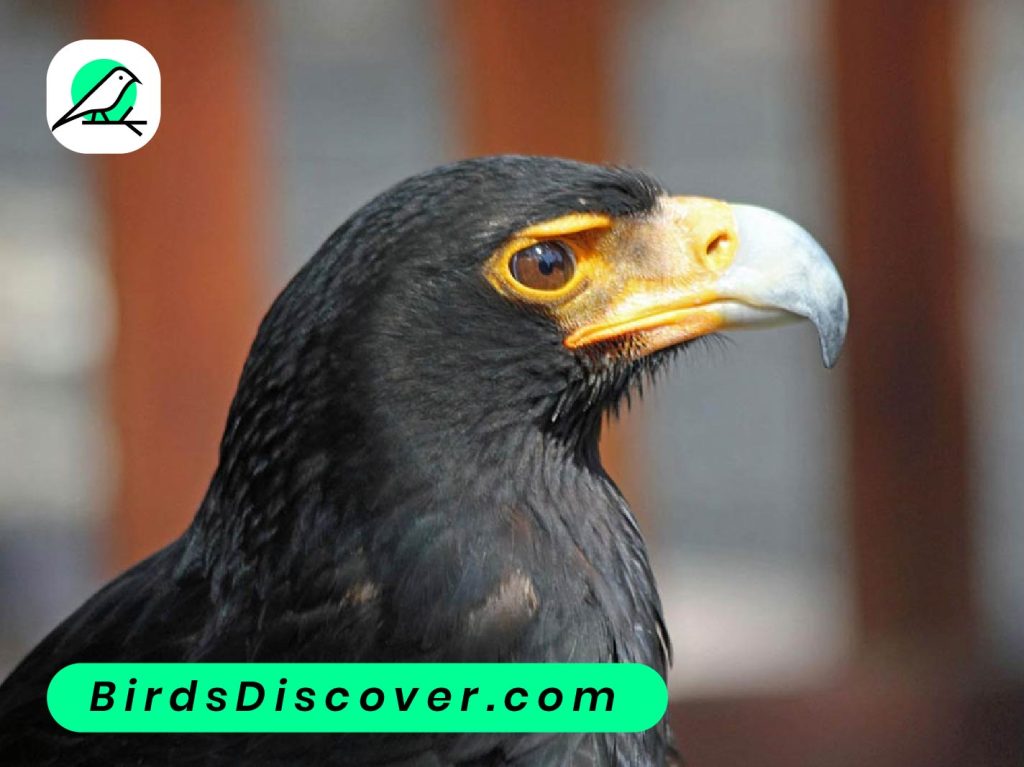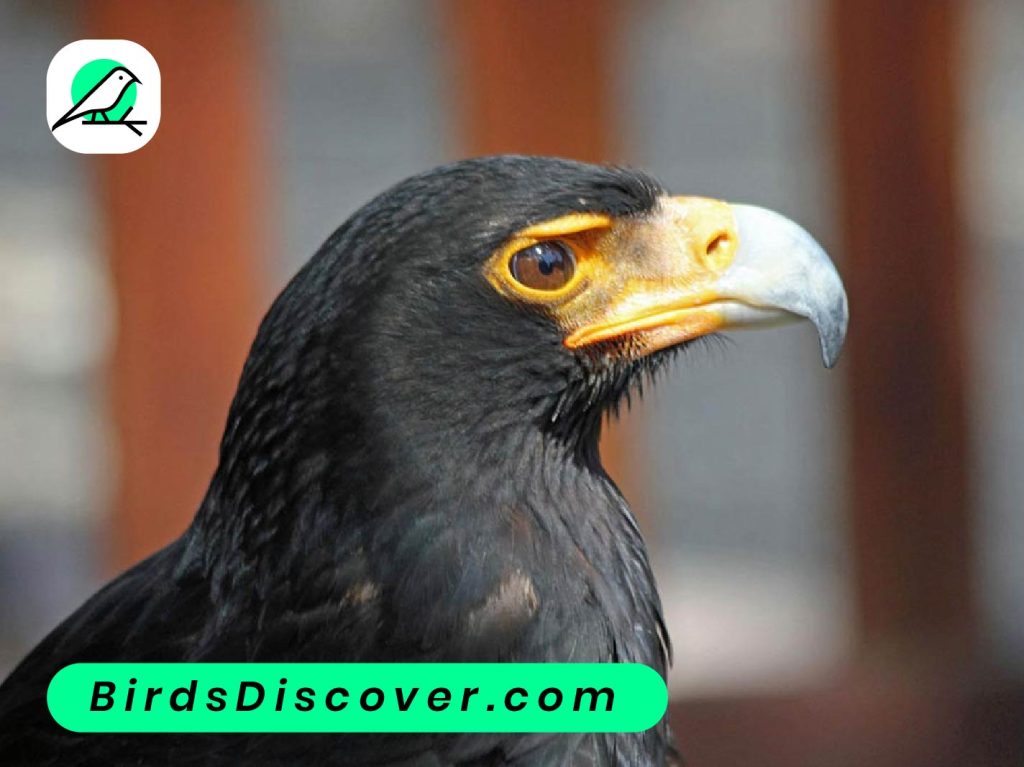Black Eagle (Ictinaetus malaiensis): Exploring Their World in Depth

Black Eagles are skilled hunters, utilizing their keen eyesight to spot prey from high perches.
They are solitary birds, known for their acrobatic flight and territorial displays during mating season.
While they are not endangered, protecting their habitats is essential for their continued existence.
Black Eagle
The Black Eagle (Aquila verreauxii), also known as Verreaux’s Eagle, is a majestic bird of prey found in various regions across Africa, particularly in mountainous and hilly areas. Distinguished by its striking plumage, the Black Eagle features predominantly black feathers with contrasting white shoulder patches and a distinctive white tail with broad black bands. This large raptor is renowned for its impressive wingspan, which can reach up to 2.2 meters (7.2 feet), allowing it to soar gracefully through the sky. The Black Eagle primarily preys on medium-sized mammals, birds, and reptiles, using its powerful talons and keen eyesight to hunt. It nests in high, rocky outcrops or tall trees, where it builds large nests made of sticks and other materials. Known for its solitary nature, the Black Eagle is a symbol of strength and elegance in its natural habitat. Its conservation status is generally stable, but habitat loss and human activities can impact its populations, making continued conservation efforts important for preserving this iconic species.
Summary
The Black Eagle (Aquila verreauxii), also known as Verreaux’s Eagle, is a formidable bird of prey native to mountainous and hilly regions of Africa. Recognizable by its striking black plumage with white shoulder patches and banded tail, this eagle boasts an impressive wingspan of up to 2.2 meters (7.2 feet). It primarily hunts medium-sized mammals, birds, and reptiles, using its sharp talons and keen eyesight. Nesting in high, secluded locations such as rocky outcrops or tall trees, the Black Eagle is a solitary and powerful raptor. Although generally stable in its population, the species faces threats from habitat loss and human activities, underscoring the need for ongoing conservation efforts to protect this majestic bird.

Taxonomy and systematics
- Kingdom: Animalia
- Description: The animal kingdom encompasses all animals, characterized by their multicellular structure and heterotrophic metabolism.
- Phylum: Chordata
- Description: This phylum includes animals with a notochord, a dorsal nerve cord, and, in most cases, a vertebral column (backbone).
- Class: Aves
- Description: The class Aves consists of all birds, characterized by feathers, beaks, and the laying of hard-shelled eggs.
- Order: Accipitriformes
- Description: This order includes diurnal birds of prey such as eagles, hawks, and vultures, known for their sharp talons and keen eyesight.
- Family: Accipitridae
- Description: The Accipitridae family comprises true eagles, hawks, and kites, distinguished by their powerful beaks and strong, hooked talons.
- Genus: Aquila
- Description: The genus Aquila includes large, powerful eagles known for their robust build and extensive wingspans.
- Species: Aquila verreauxii
- Description: The Black Eagle, scientifically named Aquila verreauxii, is noted for its striking black plumage and large size. It is named in honor of French ornithologist Jules Verreaux.
Systematics
The Black Eagle is part of the Aquila genus, which includes several large eagles commonly referred to as “true eagles.” Within the family Accipitridae, the Aquila genus is characterized by its robust predatory adaptations. The Black Eagle is known for its solitary hunting behavior, large size, and distinctive appearance, which includes black feathers with contrasting white patches and a broad, banded tail.
Conservation Status
While generally stable, the Black Eagle’s populations are monitored to address potential threats such as habitat loss and human disturbance. Conservation efforts are important to ensure the continued health and stability of its populations across its native range in Africa.
Description
The Black Eagle (Aquila verreauxii), also known as Verreaux’s Eagle, is a striking and formidable bird of prey native to Africa. It is recognized for its impressive size and dramatic appearance:
- Plumage: The Black Eagle has predominantly black feathers, which contrast sharply with its white shoulder patches and a white, banded tail. This dark plumage gives it a sleek, powerful look. Juveniles are mottled brown and white before acquiring the adult’s black coloration.
- Size: It is a large raptor with a wingspan that can reach up to 2.2 meters (7.2 feet). The body length ranges between 75 and 85 cm (30 to 33 inches), making it one of the larger eagle species in Africa.
- Bill and Talons: The Black Eagle possesses a strong, hooked beak adapted for tearing flesh. Its talons are robust and sharp, designed for grasping and killing prey.
- Eyes: It has large, keen eyes that provide excellent vision, essential for spotting prey from high altitudes. The eyes are dark and intense, contributing to its predatory effectiveness.
- Flight: The Black Eagle displays powerful and graceful flight, characterized by slow, deliberate wingbeats and occasional soaring. It uses its broad wings to navigate its mountainous or hilly habitats efficiently.
- Habitat: The Black Eagle prefers rugged, mountainous regions and can be found in various types of elevated terrain, including rocky outcrops and tall trees. It nests in high, inaccessible locations, providing safety from predators and disturbances.
- Behavior: It is a solitary bird, typically seen alone or in pairs. The Black Eagle is known for its impressive hunting skills, preying on medium-sized mammals, birds, and reptiles. It builds large nests made of sticks and branches, often situated in high, remote locations.
The Black Eagle’s combination of size, strength, and striking appearance makes it one of the most awe-inspiring raptors in its habitat.

Distribution
The Black Eagle (Aquila verreauxii) is native to sub-Saharan Africa, where it inhabits a variety of elevated and mountainous regions. Here is an overview of its distribution:
Distribution Range
- Geographical Range:
- Eastern Africa: The Black Eagle is found in countries such as Kenya, Tanzania, and Uganda. It typically inhabits highland areas and mountainous regions within these countries.
- Southern Africa: It ranges across countries including South Africa, Botswana, Zimbabwe, and Namibia. In Southern Africa, it is often found in the Drakensberg Mountains, the highlands of Lesotho, and other mountainous terrains.
- Habitat Preferences:
- Montane Forests and Woodlands: It favors mountainous regions with forested or wooded areas where it can find suitable nesting sites and hunting grounds.
- Rocky Outcrops and Cliffs: The Black Eagle often nests on cliffs or in high, inaccessible trees that provide safety from predators and human disturbance.
- Open Highlands: In some regions, it can also be found in open highland areas, as long as there are suitable perching and nesting sites.
Habitat Characteristics
- Altitude: The Black Eagle generally prefers high-altitude areas, from around 1,000 meters (3,300 feet) to 3,000 meters (9,800 feet) above sea level.
- Environmental Conditions: It thrives in rugged, rocky terrains where there are ample opportunities for hunting and nesting.
The Black Eagle’s distribution is closely tied to its habitat preferences, which include mountainous and elevated areas that offer the necessary conditions for nesting and hunting.
Habitat
The Black Eagle (Aquila verreauxii) inhabits a variety of elevated and rugged environments across sub-Saharan Africa. Its habitat preferences are closely linked to its nesting and hunting needs. Here’s a detailed overview of its habitat:
Habitat Characteristics
- Mountainous Regions: The Black Eagle primarily resides in mountainous and hilly areas. It is commonly found in highland regions such as the Drakensberg Mountains in South Africa, the Ethiopian Highlands, and the Aberdare Range in Kenya.
- Rocky Outcrops and Cliffs: It prefers nesting sites on steep cliffs or rocky outcrops that provide security and seclusion. These elevated locations are less accessible to predators and human disturbance, making them ideal for raising young.
- Forested and Wooded Areas: In addition to rocky cliffs, the Black Eagle nests in tall trees within forested or wooded areas. These environments offer ample cover and perching opportunities.
- Open Highlands: The Black Eagle can also be found in open highland areas where there is a mix of vegetation and rocky terrain. This type of environment provides sufficient hunting grounds and nesting sites.
- Altitude: The bird is typically found at altitudes ranging from about 1,000 meters (3,300 feet) to 3,000 meters (9,800 feet) above sea level. It prefers these higher elevations where its prey is abundant and suitable nesting sites are available.
Environmental Conditions
- Climate: The Black Eagle thrives in regions with a temperate climate. It is adapted to cooler, high-altitude environments and may be less commonly found in lower, hotter regions.
- Territorial Range: The Black Eagle establishes large territories in its habitat, often ranging over several square kilometers. Its territory includes both nesting and hunting areas, which are essential for its survival and reproduction.
In summary, the Black Eagle’s habitat is characterized by its preference for elevated and rugged terrain, including mountainous regions, rocky cliffs, and forested highlands. These environments provide the necessary conditions for nesting, hunting, and protection from potential threats.
Behavior of the Black Eagle
- Solitary Nature: The Black Eagle (Aquila verreauxii) is primarily solitary, except during the breeding season when pairs are more commonly observed. It is known for its solitary hunting behavior and territorial nature.
- Hunting and Feeding: The Black Eagle is a powerful predator with keen eyesight and strong talons. It hunts primarily for medium-sized mammals, such as small antelopes and hares, as well as birds and reptiles. It typically soars high in the air, scanning the ground for prey, and uses its strength and speed to capture it.
- Flight: The Black Eagle’s flight is characterized by slow, deliberate wingbeats and occasional soaring. It can cover large distances while searching for food, using its broad wings to navigate its mountainous and highland habitat efficiently.
- Territorial Behavior: This eagle is highly territorial, with individuals or pairs defending their nesting sites and hunting grounds from other eagles. Territorial disputes can be marked by aerial displays and vocalizations.
Breeding of the Black Eagle
- Nesting Sites: The Black Eagle builds its nests in high, inaccessible locations to ensure safety from predators. These nests are often constructed on cliffs or in tall, sturdy trees. The nest is large, made of sticks and other materials, and is lined with softer vegetation.
- Breeding Season: The breeding season varies by region but typically occurs during the cooler months of the year. In Southern Africa, it often coincides with the dry season, while in other areas, it might align with seasonal rains.
- Courtship and Mating: Courtship displays involve aerial acrobatics, including synchronized flight patterns and calling. These displays strengthen the pair bond and help establish territory.
- Eggs and Incubation: The female Black Eagle usually lays 1 to 2 eggs per clutch. Both parents share the incubation duties, which last about 45 to 50 days. During this period, the female remains on the nest while the male provides food.
- Raising Chicks: After hatching, the chicks are initially altricial (helpless) and rely on their parents for warmth and food. The parents feed them with regurgitated food until they are able to eat solid prey. The chicks fledge, or leave the nest, after about 70 to 90 days. They remain dependent on their parents for some time after fledging as they learn to hunt and become independent.
- Parental Care: Both parents are involved in caring for the young. The male primarily hunts and brings food to the nest, while the female incubates the eggs and broods the chicks. After fledging, the young eagles stay within the territory and are gradually encouraged to hunt on their own.
In summary, the Black Eagle exhibits solitary and territorial behavior, with a strong emphasis on its role as a powerful predator. Its breeding behavior involves careful nesting and dedicated parental care, ensuring the survival and development of its young.

Food and Feeding
The Black Eagle (Aquila verreauxii) is a skilled and versatile predator with a diet adapted to its mountainous and hilly habitat. Here’s a detailed look at its food and feeding habits:
Food
- Mammals: The Black Eagle primarily preys on medium-sized mammals. Common prey includes small antelopes, such as duikers and steenboks, as well as rodents and hares. Its strong talons are well-suited for capturing and carrying these animals.
- Birds: It also hunts various bird species. Its prey can include smaller raptors, pigeons, and other medium-sized birds. The eagle’s agility and sharp talons enable it to snatch birds in flight or from perches.
- Reptiles: Lizards and small snakes are also part of the Black Eagle’s diet. The eagle uses its keen eyesight to spot these reptiles in its rugged terrain.
Feeding Behavior
- Hunting Techniques: The Black Eagle uses a combination of soaring and perched hunting techniques. It soars high above the ground, scanning for prey with its excellent eyesight. When prey is spotted, the eagle swoops down with precision, using its powerful talons to capture it.
- Foraging Range: The eagle’s hunting range can be extensive, covering several square kilometers. It patrols its territory in search of food, often returning to the same areas where prey is abundant.
- Feeding Method: The Black Eagle’s strong beak and talons are adapted for tearing flesh. After capturing its prey, the eagle typically feeds in a secluded location, such as a perch or the nest, to avoid potential threats.
- Nesting and Food Supply: During the breeding season, the male Black Eagle plays a crucial role in providing food for the female and the chicks. He hunts and delivers prey to the nest, where the female and chicks consume it. This shared responsibility ensures that the young receive adequate nourishment during their development.
Adaptations
- Strong Talons: The eagle’s talons are powerful and sharp, designed to grasp and kill prey efficiently. They can exert a strong grip, essential for handling medium-sized mammals and birds.
- Keen Eyesight: The Black Eagle has excellent vision, allowing it to spot prey from great distances while soaring high above the ground.
- Powerful Flight: Its broad wings and strong flight muscles enable the eagle to maneuver skillfully in search of prey and to carry captured animals back to its nest or perch.
In summary, the Black Eagle’s diet is diverse and adapted to its mountainous habitat, encompassing mammals, birds, and reptiles. Its hunting techniques, powerful talons, and keen eyesight all contribute to its effectiveness as a top predator in its environment.
Calls and songs
- Primary Calls: The Black Eagle’s vocalizations are relatively varied but not as complex as those of some other raptors. Its primary calls are often described as a series of high-pitched, repetitive notes or screams. These calls are used for communication between mates, signaling distress, or marking territory.
- Courtship Calls: During courtship displays, the Black Eagle emits a series of sharp, high-pitched calls that can be heard from a distance. These vocalizations are part of the aerial displays and help to reinforce the pair bond between the mating partners.
- Territorial Calls: The Black Eagle uses calls to establish and defend its territory. These calls are usually loud and carry over long distances. The purpose is to communicate with other eagles and deter potential intruders from entering its territory.
- Chick Calls: The chicks produce distinctive begging calls when they are hungry. These calls are high-pitched and persistent, prompting the parents to bring food to the nest. The calls help the parents locate and respond to the needs of their young.
- Alarm Calls: When threatened or disturbed, the Black Eagle may emit sharp, alarmed calls. These calls are used to alert other eagles and to signal distress.
Characteristics of Vocalizations
- Frequency and Pitch: The calls of the Black Eagle are typically high-pitched and can vary in frequency. The vocalizations are not overly melodious but are effective for the eagle’s communication needs.
- Duration: Calls can vary in duration, with some being brief and repetitive, while others may be longer, especially during territorial disputes or courtship displays.
- Volume: The vocalizations can be quite loud, particularly when the eagle is defending its territory or calling to its mate. The calls are designed to carry over long distances to ensure effective communication.
In summary, the Black Eagle’s calls and songs are functional and serve various purposes including communication between mates, territory establishment, and signaling distress. The vocalizations are characterized by high-pitched, repetitive sounds that play a crucial role in the eagle’s behavior and interactions.
Threats
Habitat Loss:
- Deforestation: Logging and land conversion for agriculture or urban development can lead to the loss of nesting sites and hunting grounds. The destruction of forested and mountainous areas affects the availability of suitable habitats.
- Land Conversion: Conversion of natural landscapes into farmland or infrastructure reduces the extent of the eagle’s habitat, leading to fragmentation and decreased prey availability.
Human Disturbance:
- Recreational Activities: Increased human activity in areas where Black Eagles nest can lead to disturbances that may force the eagles to abandon their nests or reduce their breeding success.
- Tourism: Unregulated tourism near nesting sites can cause stress and disruption, affecting the eagles’ behavior and reproductive success.
Poaching and Illegal Activities:
- Direct Harm: Although not a primary target, Black Eagles can be harmed or killed by poaching or trapping, either intentionally or as bycatch in traps set for other wildlife.
- Illegal Trade: In some regions, eagles and their feathers may be illegally traded, which can directly impact their populations.
Climate Change:
- Temperature Fluctuations: Changes in climate patterns can affect the availability of prey and the quality of the eagle’s habitat. Extreme weather events and temperature changes may impact nesting success and food resources.
Environmental Pollution:
- Chemical Contaminants: Pesticides and other pollutants can enter the food chain, potentially poisoning the eagles and affecting their health. This pollution can also impact the prey species on which they depend.
Relationships to Humans
The Black Eagle holds various relationships and significance for humans:
Cultural Symbolism:
- Mythology and Folklore: In many African cultures, eagles are revered as symbols of power, freedom, and strength. The Black Eagle, with its impressive size and striking appearance, is often seen as a powerful and majestic bird in local folklore.
Conservation Value:
- Indicator Species: As a top predator, the Black Eagle serves as an indicator of the health of its ecosystem. Its presence and abundance can reflect the state of the environment, making it important for conservation monitoring.
- Conservation Efforts: Conservation organizations may focus on protecting the Black Eagle’s habitat and mitigating threats, benefiting broader environmental conservation efforts.
Educational and Ecotourism Value:
- Educational Opportunities: The Black Eagle’s impressive flight and hunting skills provide educational opportunities for wildlife enthusiasts and students. Observing these eagles can foster a greater appreciation for raptors and their roles in ecosystems.
- Ecotourism: Responsible ecotourism can offer opportunities for people to observe Black Eagles in their natural habitat, promoting conservation awareness and generating funding for habitat protection.
Potential Conflicts:
- Livestock Predation: In some regions, Black Eagles may occasionally prey on livestock, leading to potential conflicts with farmers. However, such incidents are relatively rare and often involve smaller prey.
In summary, while the Black Eagle faces several environmental and human-induced threats, it also holds significant cultural, educational, and conservation value. Protecting this majestic raptor involves addressing habitat loss, human disturbance, and environmental challenges, while fostering positive relationships with local communities.
Common Names in Different Languages
| Language | Common Name |
|---|---|
| English | Black Eagle |
| French | Aigle noir |
| Spanish | Águila negra |
| German | Schwarzer Adler |
| Portuguese | Águia-negra |
| Swahili | Tai mweusi |
| Zulu | Ibhubesi elimnyama |
| Xhosa | Ityiwa elimnyama |
| Amharic | ጥቁር አንበሳ (T’kur anbesa) |
| Hausa | Tsohon gaggawa |
| Shona | Shumba mutema |
| Sesotho | Tswane e ntšo |
| Yoruba | Ẹyẹ Dudu |

FAQS
What is the primary diet of the Black Eagle?
Answer: The Black Eagle primarily preys on medium-sized mammals, such as small antelopes and hares, as well as birds and reptiles. Its strong talons and keen eyesight help it capture and handle its prey effectively.
Where can the Black Eagle be found?
Answer: The Black Eagle is native to mountainous and hilly regions of sub-Saharan Africa. It is commonly found in countries such as South Africa, Kenya, Tanzania, and Uganda, typically inhabiting highland forests, rocky outcrops, and cliffs.
How does the Black Eagle build its nest?
Answer: The Black Eagle builds large nests in high, inaccessible locations such as cliffs or tall trees. The nests are constructed from sticks and branches, and are often lined with softer materials to create a comfortable environment for the eggs and chicks.
What are the main threats to the Black Eagle?
Answer: The main threats to the Black Eagle include habitat loss due to deforestation and land conversion, human disturbance, climate change, and environmental pollution. These factors can affect the availability of nesting sites and prey, impacting the eagle’s survival.
How does the Black Eagle communicate?
Answer: The Black Eagle uses a variety of vocalizations for communication, including high-pitched calls during courtship, territorial disputes, and to signal distress. These calls are important for maintaining territory, coordinating with mates, and alerting others to potential threats.






